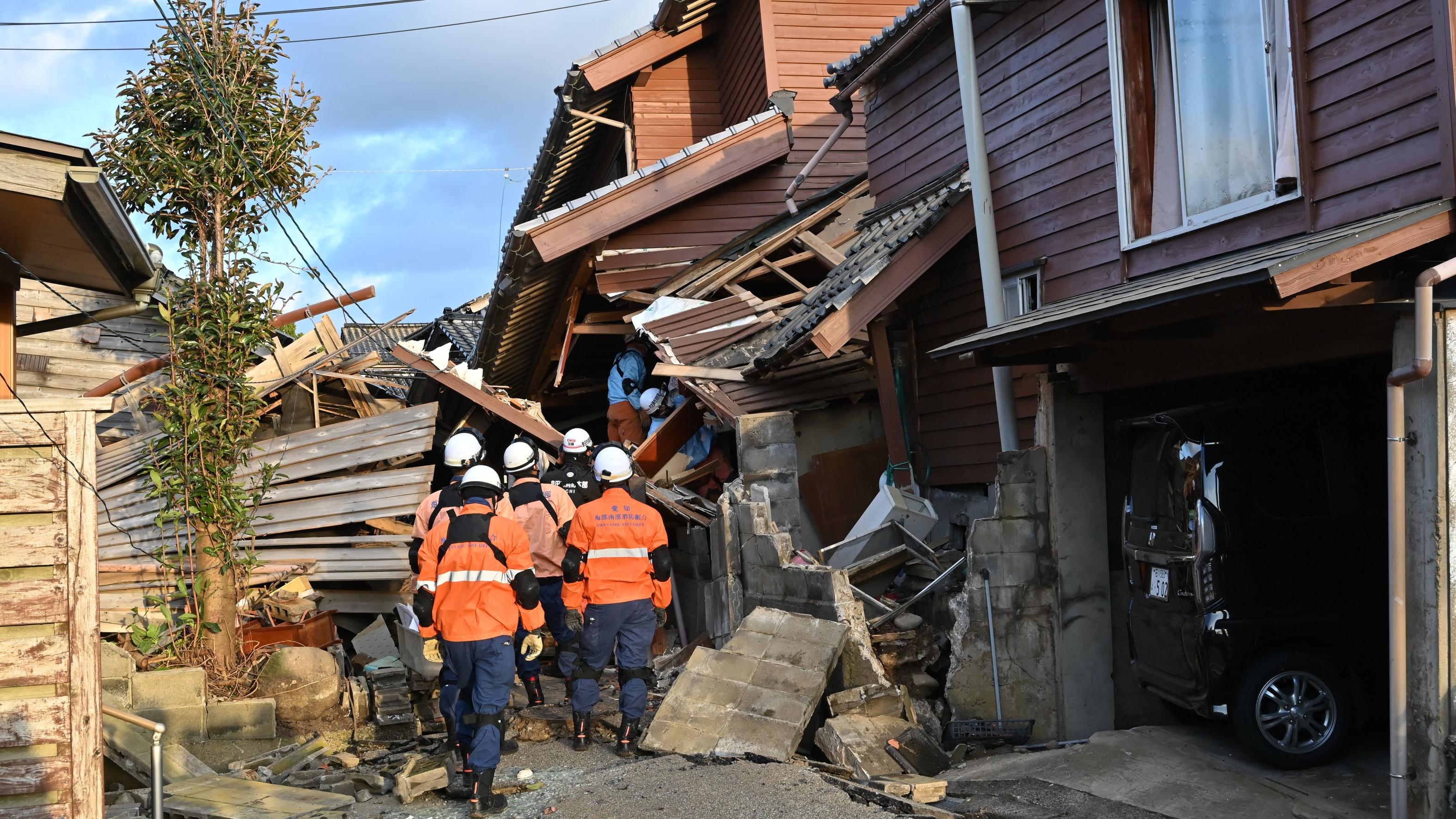 A pedestrian walks past a sign showing the logo of Japanese electric company Tokyo Electric Power Company, commonly referred to as TEPCO, the operator of the crippled Daiichi nuclear power plant in Fukushima, outside the company's headquarters in Tokyo on Aug 21, 2023. (PHOTO / AFP)
A pedestrian walks past a sign showing the logo of Japanese electric company Tokyo Electric Power Company, commonly referred to as TEPCO, the operator of the crippled Daiichi nuclear power plant in Fukushima, outside the company's headquarters in Tokyo on Aug 21, 2023. (PHOTO / AFP)
As Japan is trying hard to recover from the impact of a deadly earthquake on New Year’s Day, authorities have raced to check how it had affected the country’s nuclear power plants, bringing back memories of the deadly Fukushima disaster in 2011.
The Tokyo Electric Power Company (TEPCO) announced on Jan 1 that water spilled from the fuel pools of two reactors at its Kashiwazaki-Kariwa nuclear power plant in Niigata prefecture due to the earthquake. No damage to or leakage from buildings at the plant — one of the world’s largest nuclear plants by output — was confirmed.
The plant is an over 400-kilometer drive away from the Noto region of Ishikawa prefecture in central Japan, which was hit by the earthquake on New Year’s Day
According to TEPCO, the owner and operator of the plant, water containing radioactive materials spilled from the fuel pools was found during a check at around 6:45 pm on Jan 1. They recorded a loss of about 10 liters from the No 2 reactor and about 4 liters from the No 7 reactor.
READ MORE: Massive quake causes damage, disruptions in central Japan
According to the Yomiuri Shimbun, Japan’s largest circulated newspaper, TEPCO is measuring the radiation levels.
The plant is an over 400-kilometer drive away from the Noto region of Ishikawa prefecture in central Japan, which was hit by the earthquake on New Year’s Day.
The Japan Meteorological Agency said an earthquake with a preliminary magnitude of 7.6 struck the Noto Peninsula at 4:10 pm local time on Jan 1.
The Japanese government issued a tsunami warning for a large coastal area on the Sea of Japan following the earthquake. The city of Wajima in Ishikawa prefecture observed a tsunami of more than 1.2 meters on Jan 1. The tsunami warning was lifted at 10:00 am on Jan 2.
At least 48 people were killed in the aftermath of the quake, with rescue teams struggling on Jan 2 to reach isolated areas where buildings had been toppled, Reuters reported.
The Japanese government said it had ordered more than 97,000 people in nine prefectures on the western coast of Honshu, the largest of Japan’s main islands, to evacuate as of Jan 1.
A man in his early 20s was visiting a hot spring in Takayama, Gifu prefecture, during the earthquake. “I was washing my hands when I heard the mobile phone earthquake alert. As the earthquake grew stronger, I was unable to point my hands at the faucet. Window glass and furniture also began to shake and rattle. It lasted about one minute,” the man, who declined to be named, told China Daily.
 Firefighters inspect collapsed wooden houses in Wajima, Ishikawa prefecture on Jan 2, 2024, a day after a major 7.5 magnitude earthquake struck the Noto region in Ishikawa prefecture in the afternoon. (PHOTO / AFP)
Firefighters inspect collapsed wooden houses in Wajima, Ishikawa prefecture on Jan 2, 2024, a day after a major 7.5 magnitude earthquake struck the Noto region in Ishikawa prefecture in the afternoon. (PHOTO / AFP)
The latest disaster reminded people of the earthquake and ensuing tsunami that struck Japan on March 11, 2011. Following that earthquake, the Fukushima Daiichi nuclear power plant, also operated by TEPCO, suffered a triple meltdown.
Japan introduced a 60-year life limit for nuclear reactors after the unprecedented nuclear accident but has now shifted its policy to promote nuclear energy, aiming for an early restart of nuclear power plants, the Yomiuri Shimbun reported.
Japan’s national legislature, the Diet, enacted legislation on May 31 last year to allow the extension of nuclear power reactors’ lifespan beyond the current limit of 60 years providing certain conditions are met.
TEPCO has made changes following the operational ban. Once the Kashiwazaki-Kariwa plant is allowed to restart, it is expected to relieve the tight supply of and high demand for electricity in the areas served by TEPCO
The new policy is aimed at ensuring a stable electricity supply, realizing a decarbonized society, and leading the development of the next-generation nuclear power plants.
In this context, the Nuclear Regulation Authority, Japan’s nuclear watchdog, said on Dec 27 that it had lifted its operational ban on TEPCO’s Kashiwazaki-Kariwa plant, allowing it to work toward gaining the local government permission needed to restart.
The ban was imposed over two years ago due to inadequate counterterrorism measures at the plant and TEPCO’s failures in safety awareness regarding the protection of nuclear materials.
In 2021, it was revealed that a plant employee had violated regulations by using a colleague’s identity card to enter the central control room. It was also found that equipment for detecting intrusion from the outside was inadequate, exposing the plant’s sloppy security practices, the Yomiuri Shimbun reported.
READ MORE: Japan quake toll hits 48 as rescuers rush to reach survivors
TEPCO has made changes following the operational ban. Once the Kashiwazaki-Kariwa plant is allowed to restart, it is expected to relieve the tight supply of and high demand for electricity in the areas served by TEPCO.
However, critics have said it is unacceptable for the government to reverse its stance on restarting nuclear plants without showing a path to solving the problems.
“It appears that the lessons learned from the 2011 Fukushima nuclear disaster have been taken so lightly,” wrote the Asahi Shimbun, a leading national daily newspaper in Japan, in an editorial on June 2.
Contact the writer at jiangxueqing@chinadaily.com.cn


